Try as they
might to set the record straight, fitness experts can't be everywhere
at all times, dispelling efficacy myths or correcting form. That's why
we decided to ask them to share the fitness pet peeves they're tired of
seeing. Here, seven exercises they wish you'd stop doing:
-
1 Crunches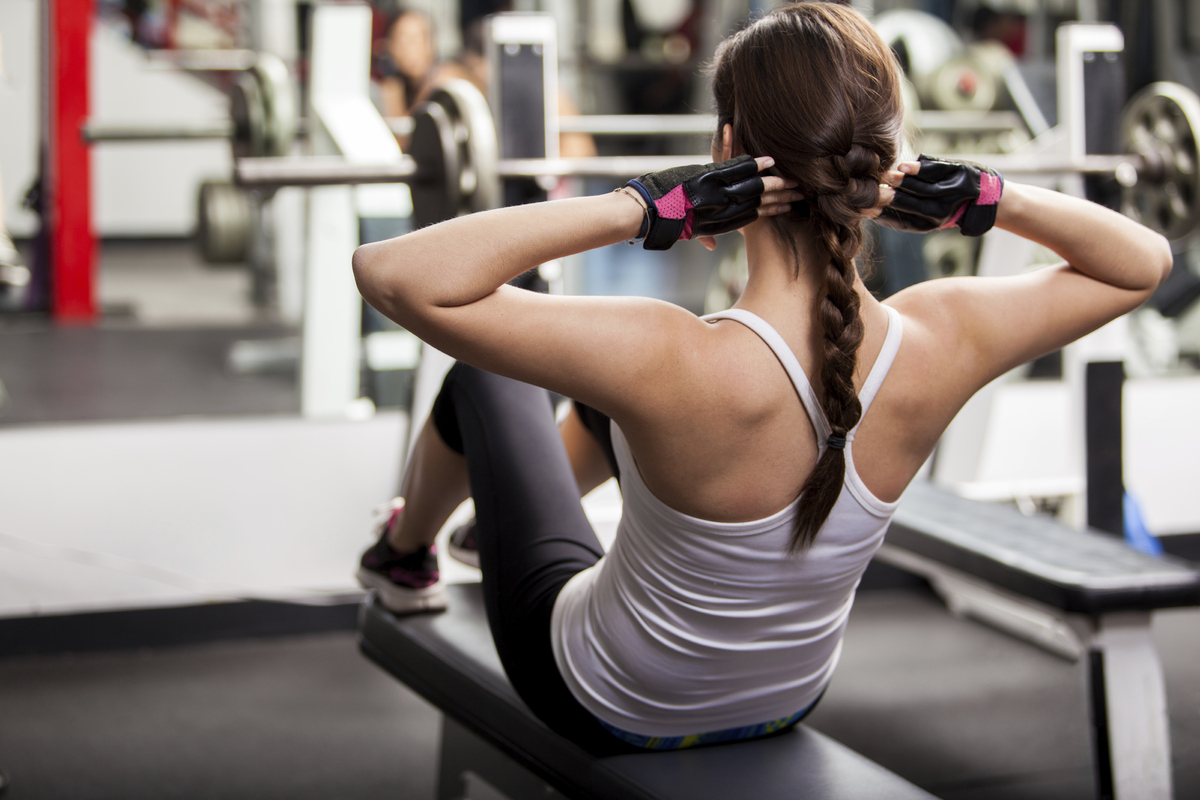 Antonio_Diaz via Getty Images
"Here's why crunches don't really work that well and are actually dangerous: Imagine your spine is a credit card. In the same way that repeatedly flexing and extending a credit card will eventually lead to wearing out of the card, repeatedly performing the crunching motion can put a lifetime of damaging strain on your back.
Antonio_Diaz via Getty Images
"Here's why crunches don't really work that well and are actually dangerous: Imagine your spine is a credit card. In the same way that repeatedly flexing and extending a credit card will eventually lead to wearing out of the card, repeatedly performing the crunching motion can put a lifetime of damaging strain on your back.
You've probably been taught that if you're going to pick a heavy object off the ground and you don't want to hurt your spine, you should bend at the knees and not at the back. But anytime you do a crunch or a sit-up, you're bending at the back -- over and over and over again!"
--Ben Greenfield, certified strength and conditioning coach and sports nutritionist, and HuffPost blogger -
2 The Seated Hip Abductor/Adductor Machine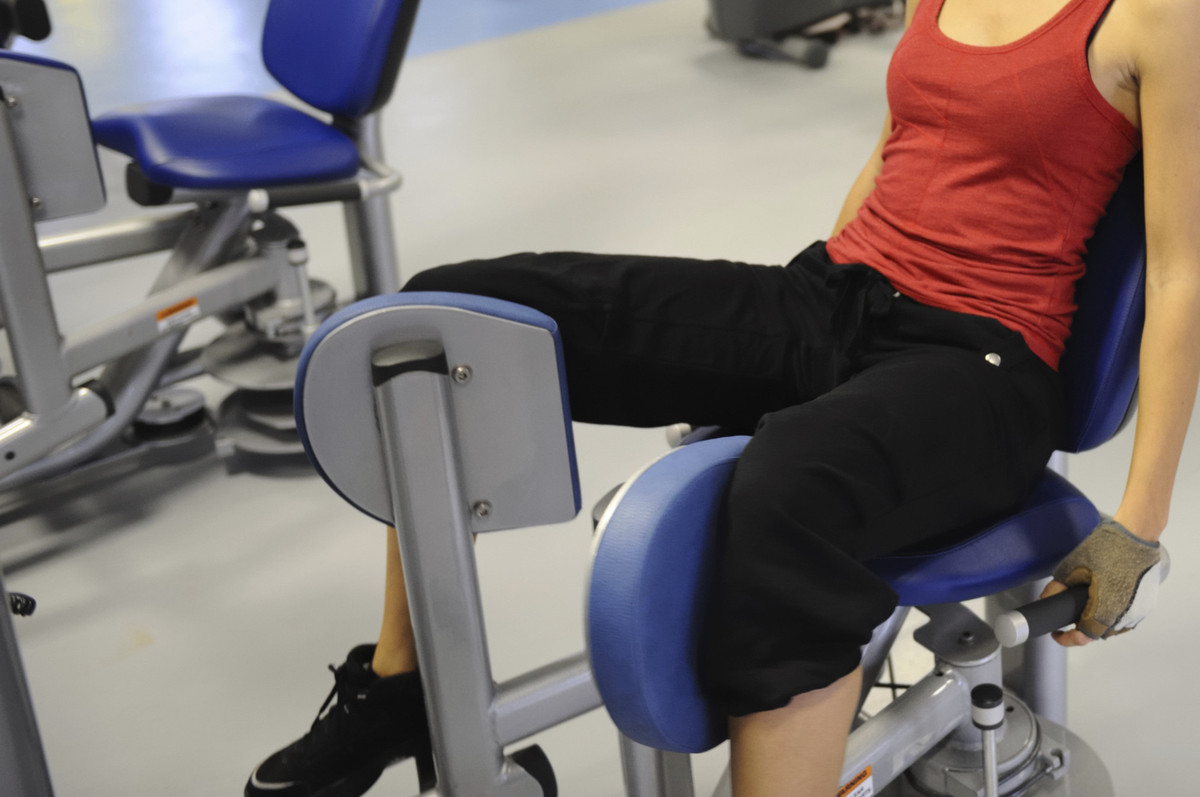 Getty Images
"It's not super-effective to just target those smaller muscle groups and, quite frankly, most people I see on that machine are talking with a friend or reading a book... not really paying attention.
Getty Images
"It's not super-effective to just target those smaller muscle groups and, quite frankly, most people I see on that machine are talking with a friend or reading a book... not really paying attention.
A better option: Get more bang for your buck and do lunges -- walking lunges, cross-behind lunges, step-ups -- you will engage and use your inner and outer thighs, while also training your whole leg and functional movement."
--Chris Freytag, national fitness expert, author and HuffPost blogger -
3 Behind-The-Head Lat Pulldown Karl Weatherly via Getty Images
"The move I think is not beneficial and possibly harmful is the behind-the-neck lat pulldown done on gym equipment.
Karl Weatherly via Getty Images
"The move I think is not beneficial and possibly harmful is the behind-the-neck lat pulldown done on gym equipment.
It requires you to have very flexible shoulders, and if you don't, you can impinge your shoulder and suffer great pain in your rotator cuff. Most trainers now recommend pulling the bar down in front of the shoulders, which still has you using your lats but in a safer way."
--Ramona Braganza, celebrity trainer and founder of 321 Fitness -
4 American Kettlebell Swings (If You're Not Ready For Them)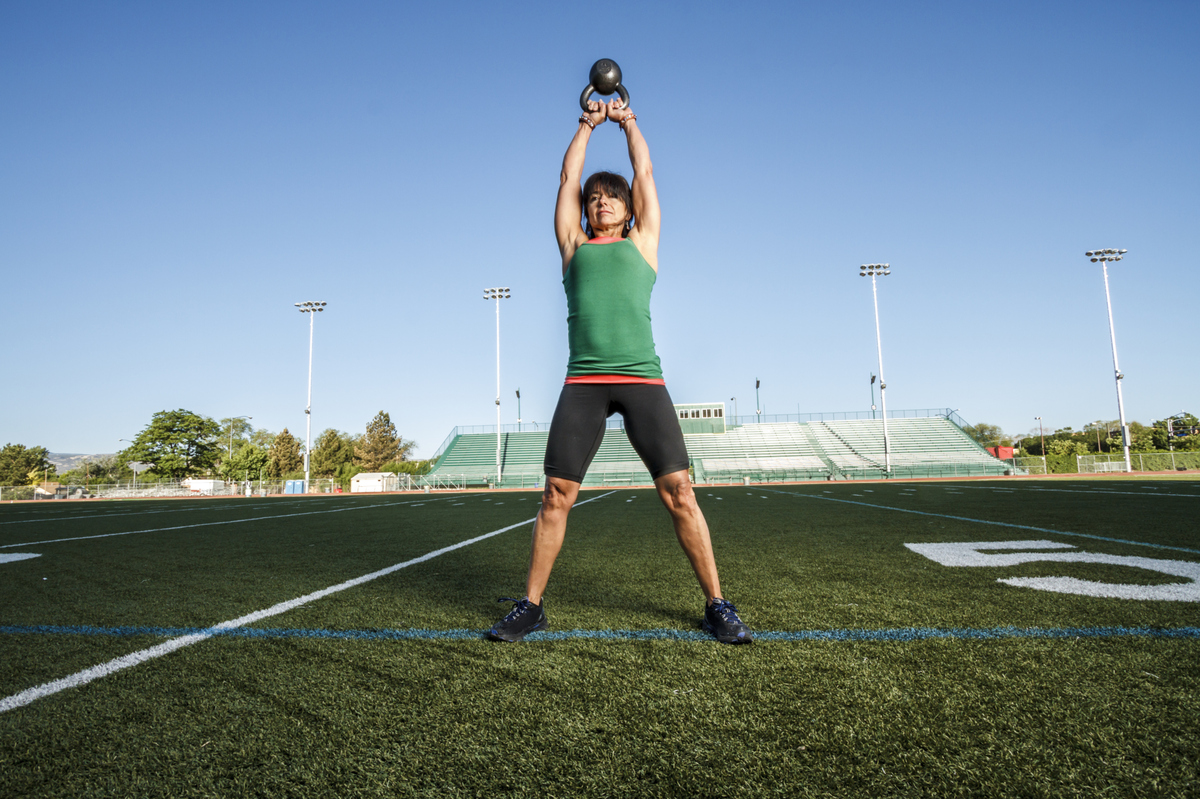 Brian Steele via Getty Images
"I am always hesitant of the American kettlebell swing. This can be a great move, but only if done properly. The traditional kettlebell swing is the Russian kettlebell swing, where the athlete moves a kettlebell from just below the groin up to around a 90-degree angle to the torso. This movement is a power-producing, dynamic movement that is beneficial to the stay-at-home mom or the elite athlete. All of the power is generated from the hips and this exercise utilizes almost every muscle in the entire body.
Brian Steele via Getty Images
"I am always hesitant of the American kettlebell swing. This can be a great move, but only if done properly. The traditional kettlebell swing is the Russian kettlebell swing, where the athlete moves a kettlebell from just below the groin up to around a 90-degree angle to the torso. This movement is a power-producing, dynamic movement that is beneficial to the stay-at-home mom or the elite athlete. All of the power is generated from the hips and this exercise utilizes almost every muscle in the entire body.
The American kettlebell swing has the same start point as the Russian kettlebell swing, but it ends with the kettlebell overhead. When a kettlebell is in the overhead position, I see lots of people who overextend their backs to compensate for the weight. This is also seen when someone is fatiguing. This can be fixed by mobilizing the shoulder girdle and the thoracic spine, as well as by scaling the movement to a lighter weight or less repetitions.
You should only complete American kettlebell swings if you have proper core stabilization at the top of the lift, as well as solid shoulder mobility. If done improperly, this can lead to back and shoulder injuries."
--Collette Stohler, author of The Intuitive Athlete, and HuffPost blogger -
5 Curls In The Squat Rack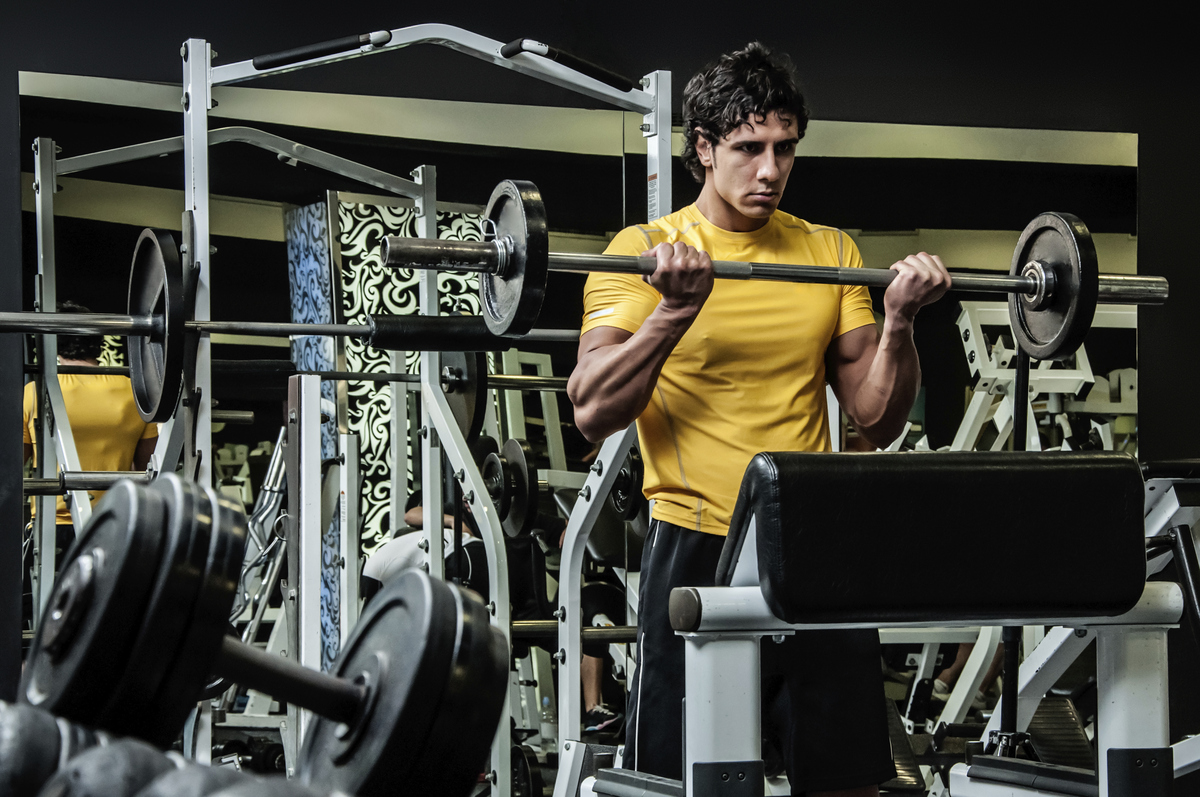 Predrag Vuckovic via Getty Images
"People need to understand that it is not alright to curl in the squat rack. This is the greatest gym etiquette offense of all and a recurring joke/point of rage amongst experienced gym-goers. You can literally curl anywhere. The weight for curls is relatively light. You could put the weight on the ground and easily pick it up. If you're squatting, you need the rack. You have to put the weight up high so you can comfortably take it out to start your set. The weight compared to most other exercises is much higher, and you need to have the safety/spot bars available in case something goes wrong during the exercise.
Predrag Vuckovic via Getty Images
"People need to understand that it is not alright to curl in the squat rack. This is the greatest gym etiquette offense of all and a recurring joke/point of rage amongst experienced gym-goers. You can literally curl anywhere. The weight for curls is relatively light. You could put the weight on the ground and easily pick it up. If you're squatting, you need the rack. You have to put the weight up high so you can comfortably take it out to start your set. The weight compared to most other exercises is much higher, and you need to have the safety/spot bars available in case something goes wrong during the exercise.
If you're curling in the squat rack, you should probably stop because you just might be aggravating the exact person you don't want to get upset, which just might make the squat rack curl the most unsafe exercise to perform of all."
--Pat Davidson, Ph.D., director of training methodology at Peak Performance in New York City -
6 The Leg Extension Machine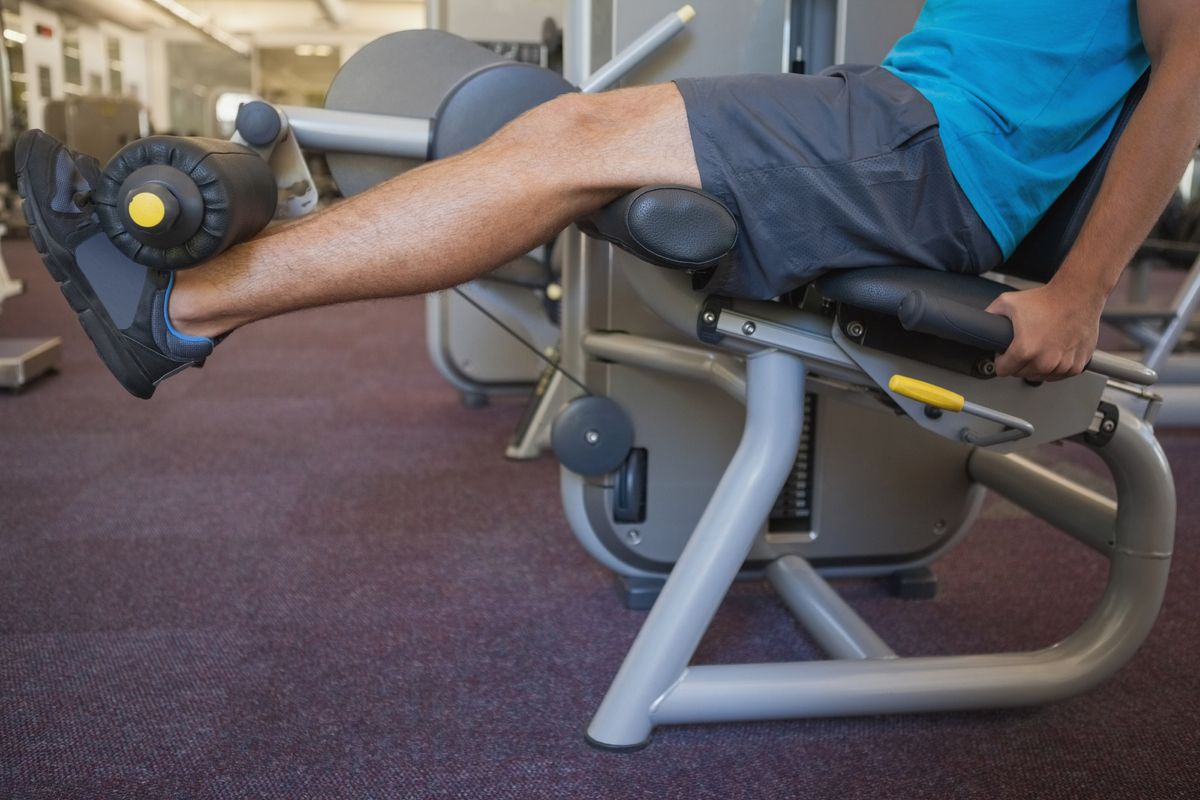 Wavebreakmedia Ltd via Getty Images
"I'm a firm believer in challenging the body with free weight and bodyweight-based exercises, as opposed to using standardized machines. Machines are not as 'one size fits all' as they seem, so more often than not, you aren't able to perform the given exercise from a natural position. When it comes to the leg extension machine specifically, it relies on a non-functional movement (we don't replicate that motion in our daily lives). It also places more stress than necessary on the back of the kneecap, which can cause problems not only for those with existing knee pain, but also others who are predisposed to such issues. There are so many more dynamic ways to work the quads (the only muscle the leg extension machine works) that activate other muscles in the legs and core, as well as create a better sense of body awareness when learning proper form!"
Wavebreakmedia Ltd via Getty Images
"I'm a firm believer in challenging the body with free weight and bodyweight-based exercises, as opposed to using standardized machines. Machines are not as 'one size fits all' as they seem, so more often than not, you aren't able to perform the given exercise from a natural position. When it comes to the leg extension machine specifically, it relies on a non-functional movement (we don't replicate that motion in our daily lives). It also places more stress than necessary on the back of the kneecap, which can cause problems not only for those with existing knee pain, but also others who are predisposed to such issues. There are so many more dynamic ways to work the quads (the only muscle the leg extension machine works) that activate other muscles in the legs and core, as well as create a better sense of body awareness when learning proper form!"
--Alena Hall, HuffPost Third Metric Fellow and certified personal trainer -
7 The Smith Machine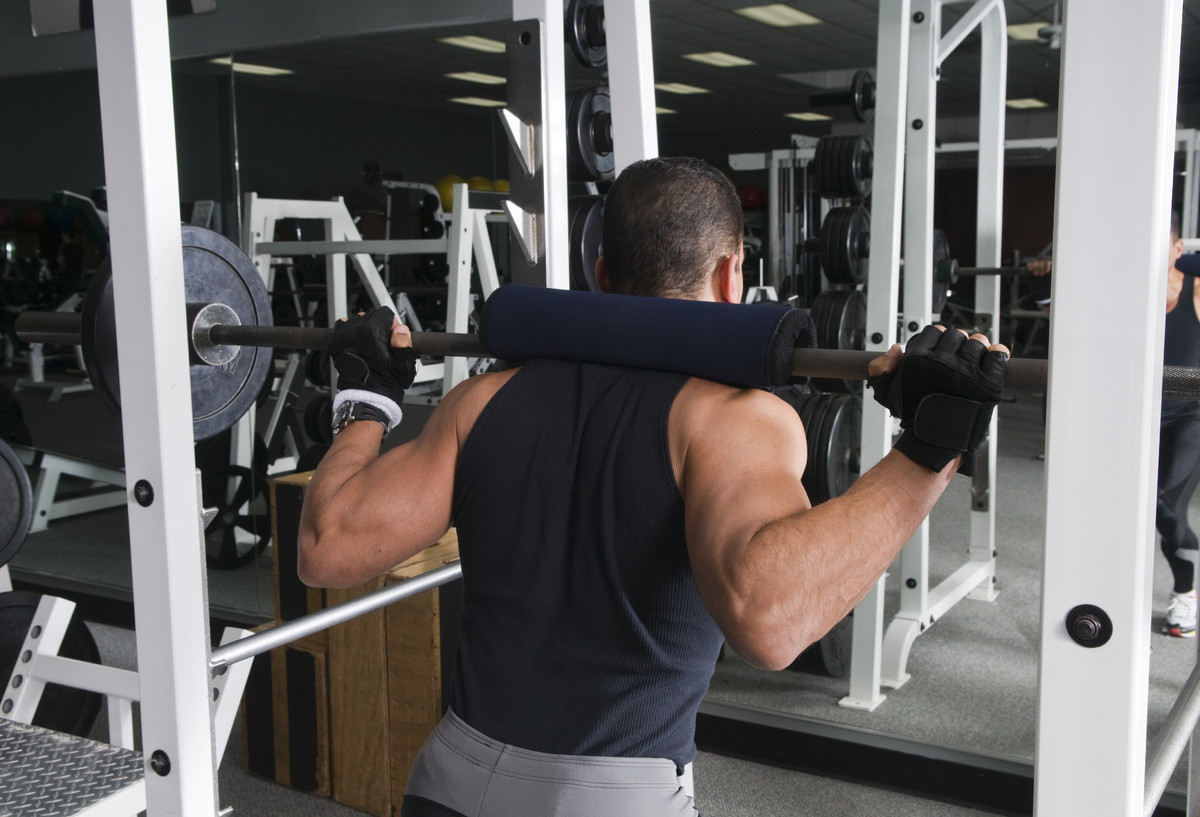 Getty Images
"The Smith machine does all of the balancing and stabilizing for you. Due to the single plane, unnatural and fixed motion, using the Smith machine does not allow you to recruit the smaller, surrounding, stabilizing muscles. This takes away the functionality of the exercises and you isolate large muscle groups. Go from squatting with a Smith machine to the motion in a real-life situation -- like lifting a heavy object off of the floor -- and you have the potential to seriously injure yourself.
Getty Images
"The Smith machine does all of the balancing and stabilizing for you. Due to the single plane, unnatural and fixed motion, using the Smith machine does not allow you to recruit the smaller, surrounding, stabilizing muscles. This takes away the functionality of the exercises and you isolate large muscle groups. Go from squatting with a Smith machine to the motion in a real-life situation -- like lifting a heavy object off of the floor -- and you have the potential to seriously injure yourself.
[The] smooth balance and fixed motion can also make you believe you can lift more weight than you should be. Continue to use the Smith machine and you will get very strong in exactly one plane of motion, which would be great if there was only one plane of motion. Over time you can develop over-use injuries depending on which exercises you are doing with the Smith machine.
The takeaway: Learn proper form with free weights. Strive to be as symmetrical as possible to avoid injuries and build up to heavier weights safely and with the appropriate amount of time."
--Alison Peters, NYU Langone Medical Center exercise physiologist
